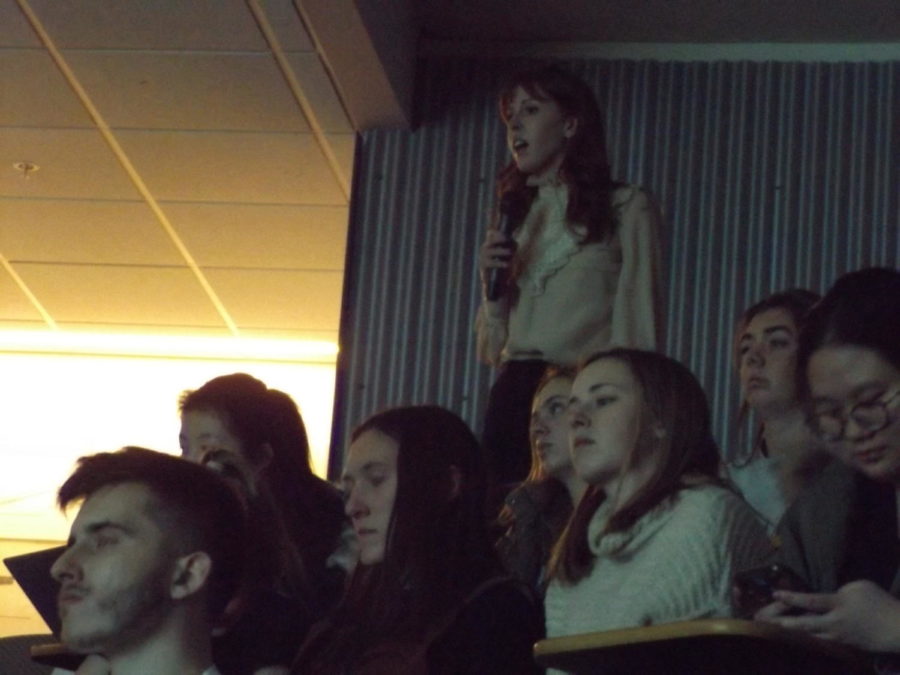Lecture discusses moral obligations of architects
February 5, 2020
A former professor discussed the responsibility architecture has with people while focusing on gender and its impact on different aspects of society on Wednesday.
Lori Brown, professor of architecture at Syracuse University, presented the lecture “What Responsibility Do Architects Have to Create a More Just World?” at 5:30 p.m. Wednesday in Kocimski Auditorium of the College of Design building.
Brown shared her research about architecture and its relationship with social justice. She focused on three topics in which she was involved in three different projects: Politics of Space, the exhibition “Now What?! Advocacy, Activism & Alliances in American Architecture since 1968” and Bloomsbury Global Encyclopedia of Women in Architecture 1960-2015 with Karen Burns.
In her section Politics of Space, Brown shared her project “Birthing, Borders and Bodies.” She discussed issues about some reproductive facilities in the suburbs of Los Angeles where pregnant Asian women came to the country to give birth, and the reason people found out was because the building codes were violated.
She also talked about the present problem that immigrants on the border face, like parents and children being separated and locked in overpopulated detention centers, which also violates the building codes.
“As an architect, I can no longer sit there and watch these kinds of conditions unfold,” Brown said.
After witnessing these events, Brown said she decided to take action, and part of her project focused on refugee centers.
She got involved with the Holy Family Birth Center in Wesalco, Texas, a center that provides maternal and childcare.
She said she had the opportunity to interview the primary nun: “It was really interesting to hear how they were thinking about how space really matters and that the kind of quality of the environment they wanted to cultivate was very much related to the kind of construction techniques.”
Another center she was involved with was Sacred Heart Respite Center in McAllen, Texas. The center started in the basement of the church and evolved into a resting facility that’s open to immigrants in need of a room to stay, a shower and medical attention after being released from detention.
“We volunteered for a week, which was a really eye-opening experience […] and so we spent a week in this facility kind of making [the donation storage room] more space-ly efficient, and the way that they were operating it made me really aware that we all had good intentions, but this surplus has an effect on the other side […] and I think how we think about resources and how we think about what we can offer is something that architects, we need to think more about, and we as a society […] need to think about,” Brown said.
The second project she worked on was the traveling exhibition “Now What?! Advocacy, Activism and Alliances in American Architecture since 1968,” which is interactive with an online catalog.
“It will have event publications that tell the vibrant and largely unknown history of how people in our discipline work to advance the values of quality and social justice, specifically around the civil rights and all the LGTBQ+ events in the past century,” Brown said.
Brown’s third and last project is women in architecture, especially the book “Bloomsbury Global Encyclopedia of Women in Architecture 1960-2015,” of which she is the co-editor with Karen Burns.
“This is a large documentary project, which maps the diversity of women’s practice in the build environment of the global North and South during this key time period,” Brown said. “Scholars and architects from across the world are collaborating on this world-scale, international survey of the impacts of the women’s ideas, architecture action, and activism.”







